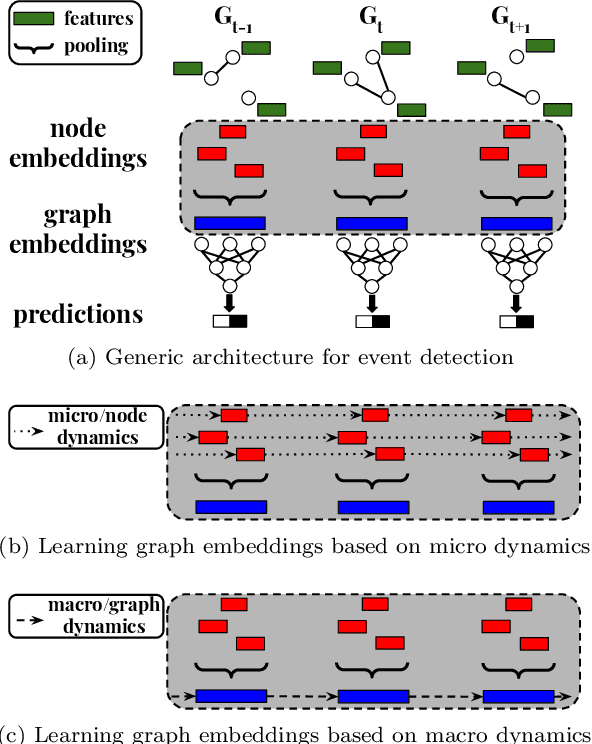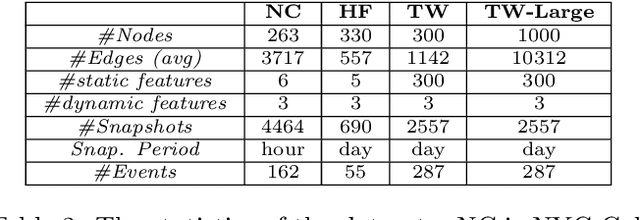Mert Kosan
Attribute-Enhanced Similarity Ranking for Sparse Link Prediction
Nov 29, 2024



Abstract:Link prediction is a fundamental problem in graph data. In its most realistic setting, the problem consists of predicting missing or future links between random pairs of nodes from the set of disconnected pairs. Graph Neural Networks (GNNs) have become the predominant framework for link prediction. GNN-based methods treat link prediction as a binary classification problem and handle the extreme class imbalance -- real graphs are very sparse -- by sampling (uniformly at random) a balanced number of disconnected pairs not only for training but also for evaluation. However, we show that the reported performance of GNNs for link prediction in the balanced setting does not translate to the more realistic imbalanced setting and that simpler topology-based approaches are often better at handling sparsity. These findings motivate Gelato, a similarity-based link-prediction method that applies (1) graph learning based on node attributes to enhance a topological heuristic, (2) a ranking loss for addressing class imbalance, and (3) a negative sampling scheme that efficiently selects hard training pairs via graph partitioning. Experiments show that Gelato outperforms existing GNN-based alternatives.
Global Human-guided Counterfactual Explanations for Molecular Properties via Reinforcement Learning
Jun 19, 2024Abstract:Counterfactual explanations of Graph Neural Networks (GNNs) offer a powerful way to understand data that can naturally be represented by a graph structure. Furthermore, in many domains, it is highly desirable to derive data-driven global explanations or rules that can better explain the high-level properties of the models and data in question. However, evaluating global counterfactual explanations is hard in real-world datasets due to a lack of human-annotated ground truth, which limits their use in areas like molecular sciences. Additionally, the increasing scale of these datasets provides a challenge for random search-based methods. In this paper, we develop a novel global explanation model RLHEX for molecular property prediction. It aligns the counterfactual explanations with human-defined principles, making the explanations more interpretable and easy for experts to evaluate. RLHEX includes a VAE-based graph generator to generate global explanations and an adapter to adjust the latent representation space to human-defined principles. Optimized by Proximal Policy Optimization (PPO), the global explanations produced by RLHEX cover 4.12% more input graphs and reduce the distance between the counterfactual explanation set and the input set by 0.47% on average across three molecular datasets. RLHEX provides a flexible framework to incorporate different human-designed principles into the counterfactual explanation generation process, aligning these explanations with domain expertise. The code and data are released at https://github.com/dqwang122/RLHEX.
DGCLUSTER: A Neural Framework for Attributed Graph Clustering via Modularity Maximization
Dec 20, 2023



Abstract:Graph clustering is a fundamental and challenging task in the field of graph mining where the objective is to group the nodes into clusters taking into consideration the topology of the graph. It has several applications in diverse domains spanning social network analysis, recommender systems, computer vision, and bioinformatics. In this work, we propose a novel method, DGCluster, which primarily optimizes the modularity objective using graph neural networks and scales linearly with the graph size. Our method does not require the number of clusters to be specified as a part of the input and can also leverage the availability of auxiliary node level information. We extensively test DGCluster on several real-world datasets of varying sizes, across multiple popular cluster quality metrics. Our approach consistently outperforms the state-of-the-art methods, demonstrating significant performance gains in almost all settings.
GNNX-BENCH: Unravelling the Utility of Perturbation-based GNN Explainers through In-depth Benchmarking
Oct 03, 2023



Abstract:Numerous explainability methods have been proposed to shed light on the inner workings of GNNs. Despite the inclusion of empirical evaluations in all the proposed algorithms, the interrogative aspects of these evaluations lack diversity. As a result, various facets of explainability pertaining to GNNs, such as a comparative analysis of counterfactual reasoners, their stability to variational factors such as different GNN architectures, noise, stochasticity in non-convex loss surfaces, feasibility amidst domain constraints, and so forth, have yet to be formally investigated. Motivated by this need, we present a benchmarking study on perturbation-based explainability methods for GNNs, aiming to systematically evaluate and compare a wide range of explainability techniques. Among the key findings of our study, we identify the Pareto-optimal methods that exhibit superior efficacy and stability in the presence of noise. Nonetheless, our study reveals that all algorithms are affected by stability issues when faced with noisy data. Furthermore, we have established that the current generation of counterfactual explainers often fails to provide feasible recourses due to violations of topological constraints encoded by domain-specific considerations. Overall, this benchmarking study empowers stakeholders in the field of GNNs with a comprehensive understanding of the state-of-the-art explainability methods, potential research problems for further enhancement, and the implications of their application in real-world scenarios.
Robust Ante-hoc Graph Explainer using Bilevel Optimization
May 25, 2023Abstract:Explaining the decisions made by machine learning models for high-stakes applications is critical for increasing transparency and guiding improvements to these decisions. This is particularly true in the case of models for graphs, where decisions often depend on complex patterns combining rich structural and attribute data. While recent work has focused on designing so-called post-hoc explainers, the question of what constitutes a good explanation remains open. One intuitive property is that explanations should be sufficiently informative to enable humans to approximately reproduce the predictions given the data. However, we show that post-hoc explanations do not achieve this goal as their explanations are highly dependent on fixed model parameters (e.g., learned GNN weights). To address this challenge, this paper proposes RAGE (Robust Ante-hoc Graph Explainer), a novel and flexible ante-hoc explainer designed to discover explanations for a broad class of graph neural networks using bilevel optimization. RAGE is able to efficiently identify explanations that contain the full information needed for prediction while still enabling humans to rank these explanations based on their influence. Our experiments, based on graph classification and regression, show that RAGE explanations are more robust than existing post-hoc and ante-hoc approaches and often achieve similar or better accuracy than state-of-the-art models.
Link Prediction without Graph Neural Networks
May 23, 2023Abstract:Link prediction, which consists of predicting edges based on graph features, is a fundamental task in many graph applications. As for several related problems, Graph Neural Networks (GNNs), which are based on an attribute-centric message-passing paradigm, have become the predominant framework for link prediction. GNNs have consistently outperformed traditional topology-based heuristics, but what contributes to their performance? Are there simpler approaches that achieve comparable or better results? To answer these questions, we first identify important limitations in how GNN-based link prediction methods handle the intrinsic class imbalance of the problem -- due to the graph sparsity -- in their training and evaluation. Moreover, we propose Gelato, a novel topology-centric framework that applies a topological heuristic to a graph enhanced by attribute information via graph learning. Our model is trained end-to-end with an N-pair loss on an unbiased training set to address class imbalance. Experiments show that Gelato is 145% more accurate, trains 11 times faster, infers 6,000 times faster, and has less than half of the trainable parameters compared to state-of-the-art GNNs for link prediction.
Event Detection on Dynamic Graphs
Oct 23, 2021



Abstract:Event detection is a critical task for timely decision-making in graph analytics applications. Despite the recent progress towards deep learning on graphs, event detection on dynamic graphs presents particular challenges to existing architectures. Real-life events are often associated with sudden deviations of the normal behavior of the graph. However, existing approaches for dynamic node embedding are unable to capture the graph-level dynamics related to events. In this paper, we propose DyGED, a simple yet novel deep learning model for event detection on dynamic graphs. DyGED learns correlations between the graph macro dynamics -- i.e. a sequence of graph-level representations -- and labeled events. Moreover, our approach combines structural and temporal self-attention mechanisms to account for application-specific node and time importances effectively. Our experimental evaluation, using a representative set of datasets, demonstrates that DyGED outperforms competing solutions in terms of event detection accuracy by up to 8.5% while being more scalable than the top alternatives. We also present case studies illustrating key features of our model.
 Add to Chrome
Add to Chrome Add to Firefox
Add to Firefox Add to Edge
Add to Edge